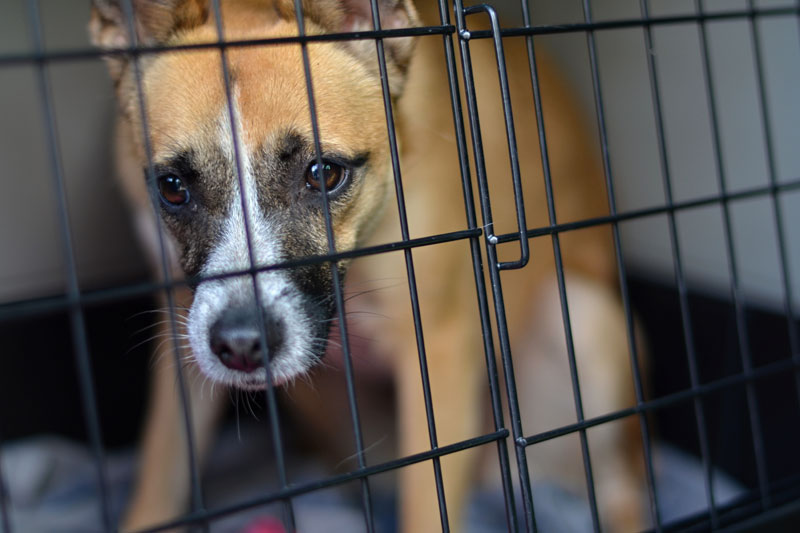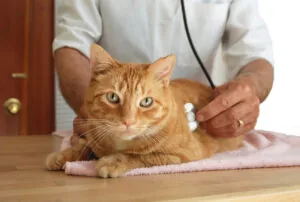Crate Training 101

Crate training takes advantage of your dog’s natural instincts as a den animal. A wild dog’s den is their home—a place to sleep, hide from danger and raise a family. The crate becomes your dog’s den, where they can find comfort and solitude while you know they’re safe and secure (and not shredding your house while you’re out running errands).The primary use for a crate is house training, because dogs don’t like to soil their dens. The crate can limit access to the rest of the house while they learn other rules, like not to chew on furniture. Crates are also a safe way to transport your dog in the car.
What type of crate will I need?
Wire crates are the most preferred choice when purchasing a crate. It folds up easily for storage/transport and has a removable pan at the bottom for easy cleanup. Wire crates are also very durable and come in all sizes to house all dogs breeds and sizes. Travel Crates are ideal for your frequent travelers. Most airlines accept the hard plastic travel crates for cargo hold. Soft travel crates sometimes can be classified as a carry-on item and you are accommodated on the plane with you. Be sure to look up rules and regulations for traveling with your pet. You can use a hard plastic crate for crate training if it will be used for an extra-small breed that fits properly.
Where should the cage be located?
Because dogs are social animals, an ideal location for the crate is a room where the family spends time such as a kitchen, den, or in a bedroom where the dog might sleep at night.
How can crating or confinement become a positive experience?
Most dogs quickly choose a small area, such as a corner of a room, in a dog bed, or on or under a couch, where they go to relax. If your puppy has just recently been adopted from the breeder, kennel or pet store, crate training should be relatively easy, since your puppy is likely already accustomed to sleeping in a pen or crate. The key to making the crate the dog’s favorite retreat and sleeping area is to associate the crate with as many positive and relaxing experiences and stimuli as possible (treats, chew toys, bedding). Place the dog in its cage when playing with new toys, during scheduled rest and sleep periods or even during feeding.
You must plan and be aware of the dog’s schedule, including its needs for exploration, play, food, and elimination, so that the dog is only placed in its cage after each of these needs is fulfilled. You must then return to the dog to release it from its cage before the next exercise, feeding or elimination period is due. A radio or television playing in the background may help to calm the dog when it is alone in its cage, especially during the daytime. These may also help to mask environmental noises that can stimulate the dog to vocalize. The crate should not be used for punishment. There is also some evidence to support the use of a pheromone spray on the dog’s blanket or a pheromone diffuser in the confinement area to help the dog adapt.
Potential problems
Too much time in the crate
A crate isn’t a magical solution. If not used correctly, a dog can feel trapped and frustrated. For example, if your dog is crated all day while you’re at work and then crated again all night, they are spending too much time in too small a space. Other arrangements should be made to accommodate their physical and emotional needs. Also remember that puppies under six months of age shouldn’t stay in a crate for more than three or four hours at a time. They can’t control their bladders and bowels for longer periods.
Whining
If your dog whines or cries while in the crate at night, it may be difficult to decide whether they are whining to be let out of the crate, or whether they need to be let outside to eliminate. If you followed the training procedures outlined above, your dog hasn’t been rewarded for whining in the past by being released from their crate. Try to ignore the whining. If your dog is just testing you, they will probably stop whining soon. If the whining continues after you’ve ignored them for several minutes, use the phrase that they associate with going outside to eliminate. If your dog responds and becomes excited, take him outside. This should be a trip with a purpose, not play time. If you’re convinced that your dog doesn’t need to be eliminated, the best response is to ignore them until your dog stops whining. Don’t give in, otherwise you’ll teach your dog to whine loudly to get what they want. If you’ve progressed gradually through the training steps and haven’t done too much too fast, you’ll be less likely to encounter this problem. If the problem becomes unmanageable, you may need to start the crate training process over again.
Separation anxiety
Attempting to use the crate as a remedy for separation anxiety won’t solve the problem. A crate may prevent your dog from being destructive, but they may injure themselves in an attempt to escape from the crate. Separation anxiety problems can only be resolved with counter-conditioning and desensitization procedures.
Crate training is all about keeping the kennel a pleasant space, not an undesirable area, otherwise your pet will be reluctant to continue going in it on a daily basis. It requires time and patience and there will be trials and tribulations. Once you and your pet go through all the obstacles and have established a great crate routine, it will be great for everyone!
Share This Post
Recent Posts
About Shallowford Animal Hospital
Shallowford Animal Hospital and The Pet Spa at Shallowford are dedicated to the exceptional, compassionate care your pet deserves. Pets hold a very special place in our families, and we treat yours like our own.



